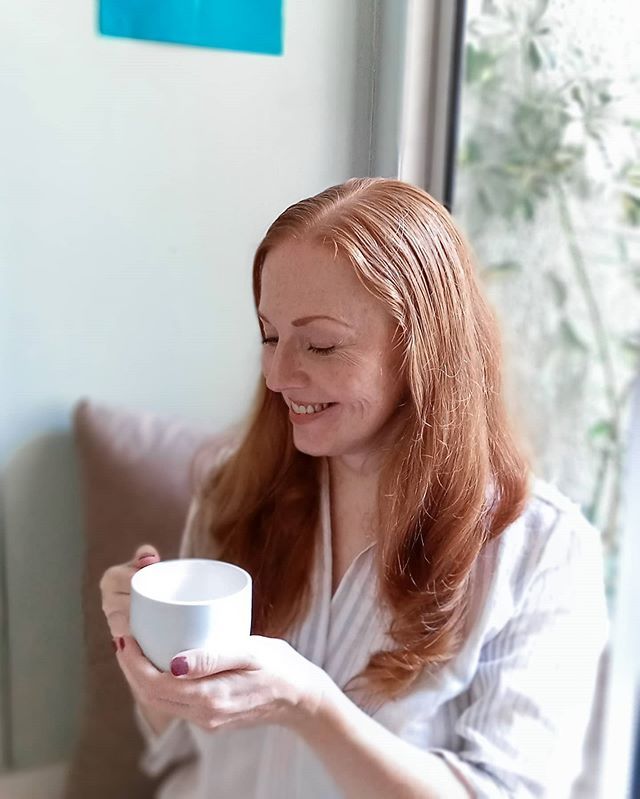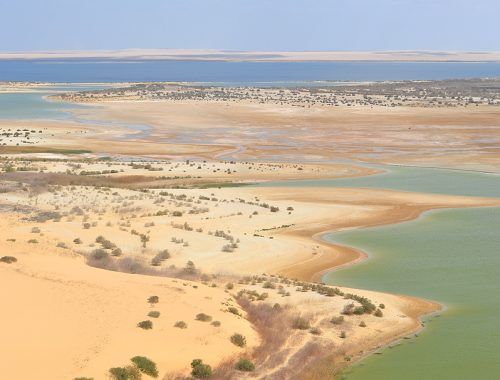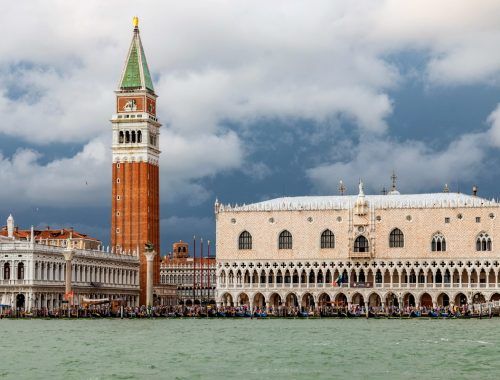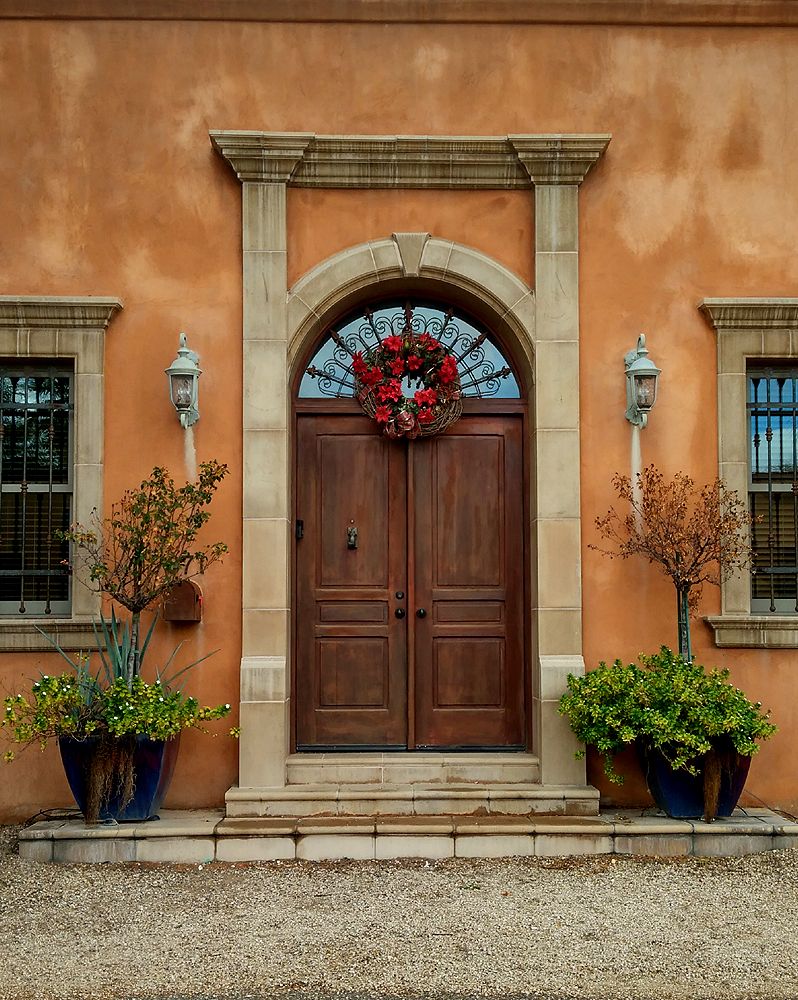
A walk through Tucson’s Barrio Viejo offers a colorful look at Mexican heritage and Arizona’s vibrant history.
Barrio Viejo is great for foodies and history buffs for an afternoon of exploring.
And it’s an underrated gem in one of Arizona’s most historic cities.
Barrio Viejo offers a colorful look at the Mexican heritage and vibrant communities that have shaped Tucson’s urban life.
But first, coffee
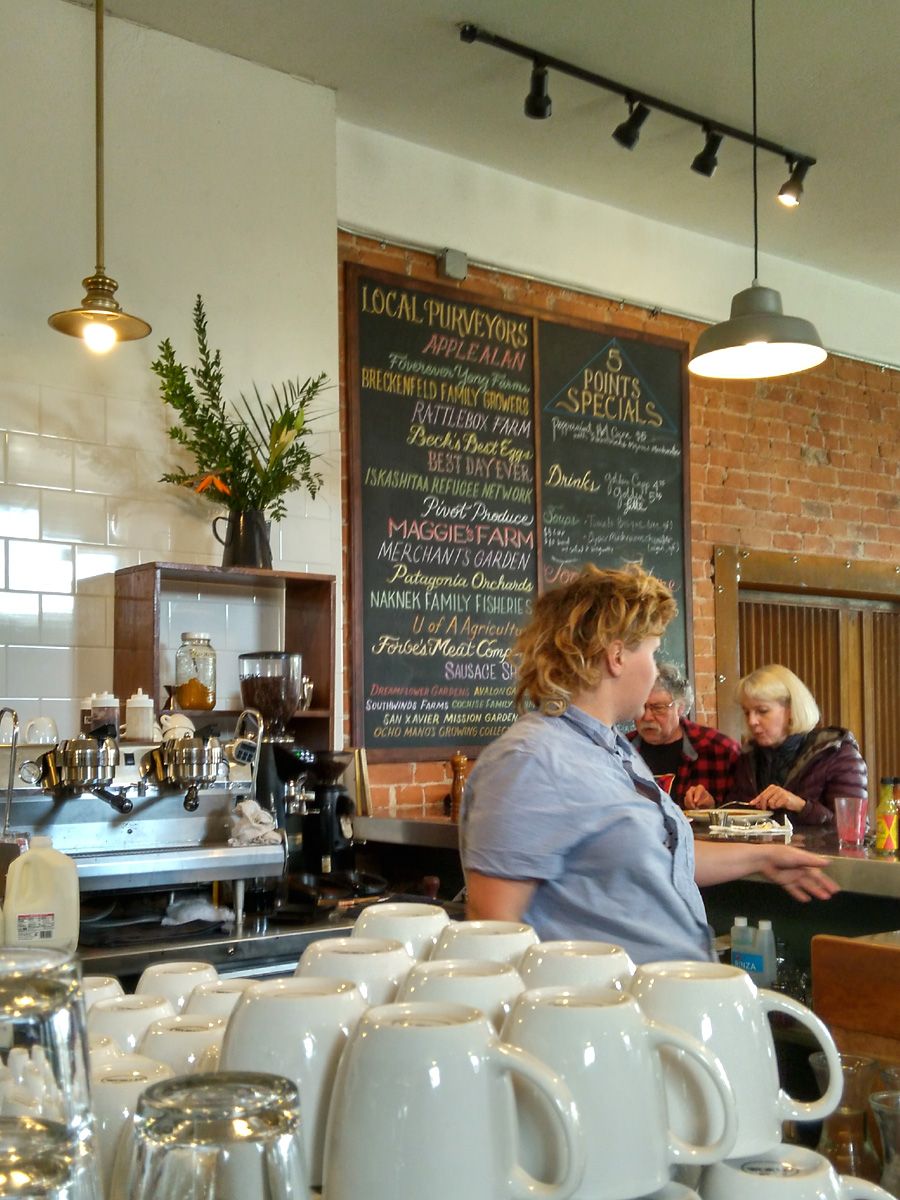
Start your walking tour of Barrio Viejo with some coffee at 5 Points Market & Restaurant.
There’s a small outdoor patio filled with sunlit tables.
Inside, this hip eatery is already buzzing with a weekend crowd.
There are daily specials on the blackboard, exposed brick and hardwood floors.
On the menu are favorites like huevos rancheros (a classic Southwestern breakfast dish) and cobb salad. Unique drinks include juice from locally foraged prickly pear shrub.
There’s a selection of local organic groceries and produce for sale, and a farmers market on Sundays at the adjacent Cesar Chavez Park.
The hip eatery is on the Southeastern tip of Tucson’s Barrio Viejo neighborhood. It’s a perfect start for a walking tour through this vibrant district.
A colorful past
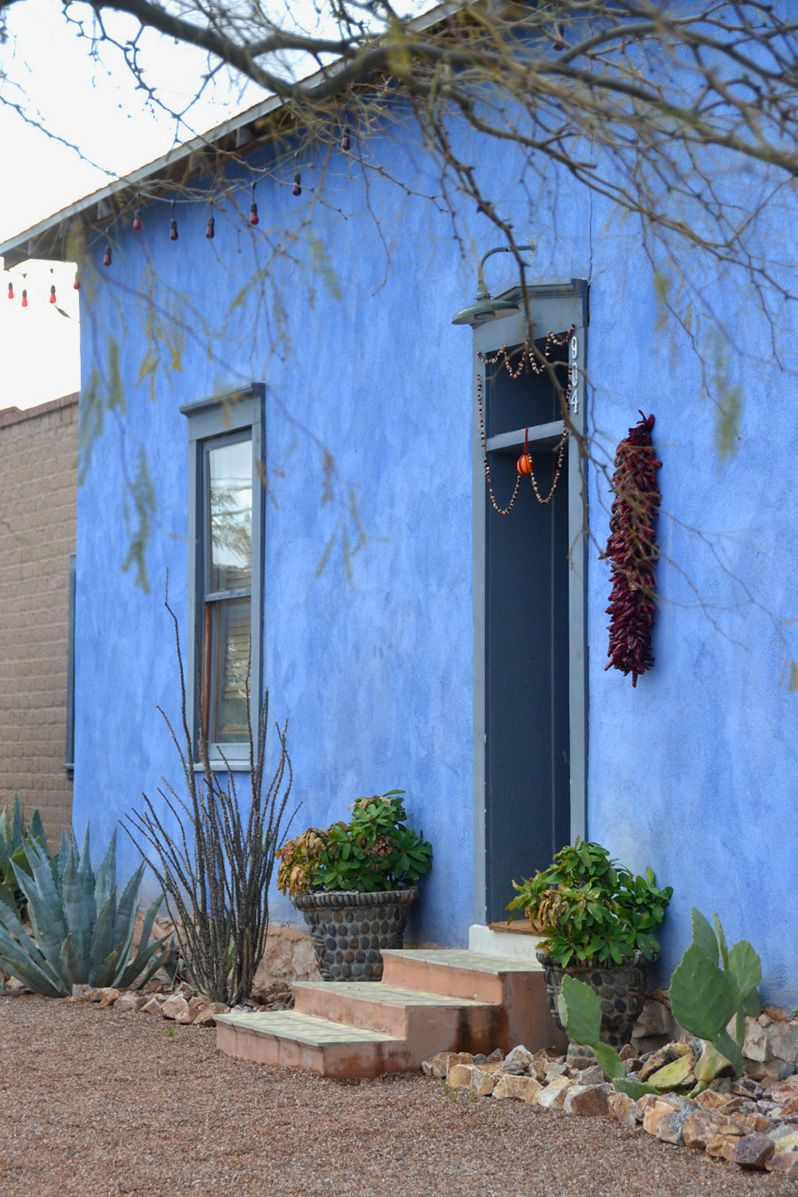
Tucson is about 60 miles from the Mexican border, with a population of some half a million residents.
Founded as a military fort by the Spanish, it was included in the state of Sonora after Mexico gained independence from Spain in 1821. Some three decades later, the U.S. acquired Tucson from Mexico as part of the Gadsden Purchase.
Today the city is about 41 percent Hispanic or Latino. It’s known for Sonoran-style Mexican food and its Mariachi musicians. There’s also a rodeo week, a thriving punk scene and a procession on All Soul’s that draws on the rich traditions of Mexico’s Day of the Dead.
And in Barrio Viejo, that Mexican heritage can be seen everywhere.
A Barrio Viejo walking tour
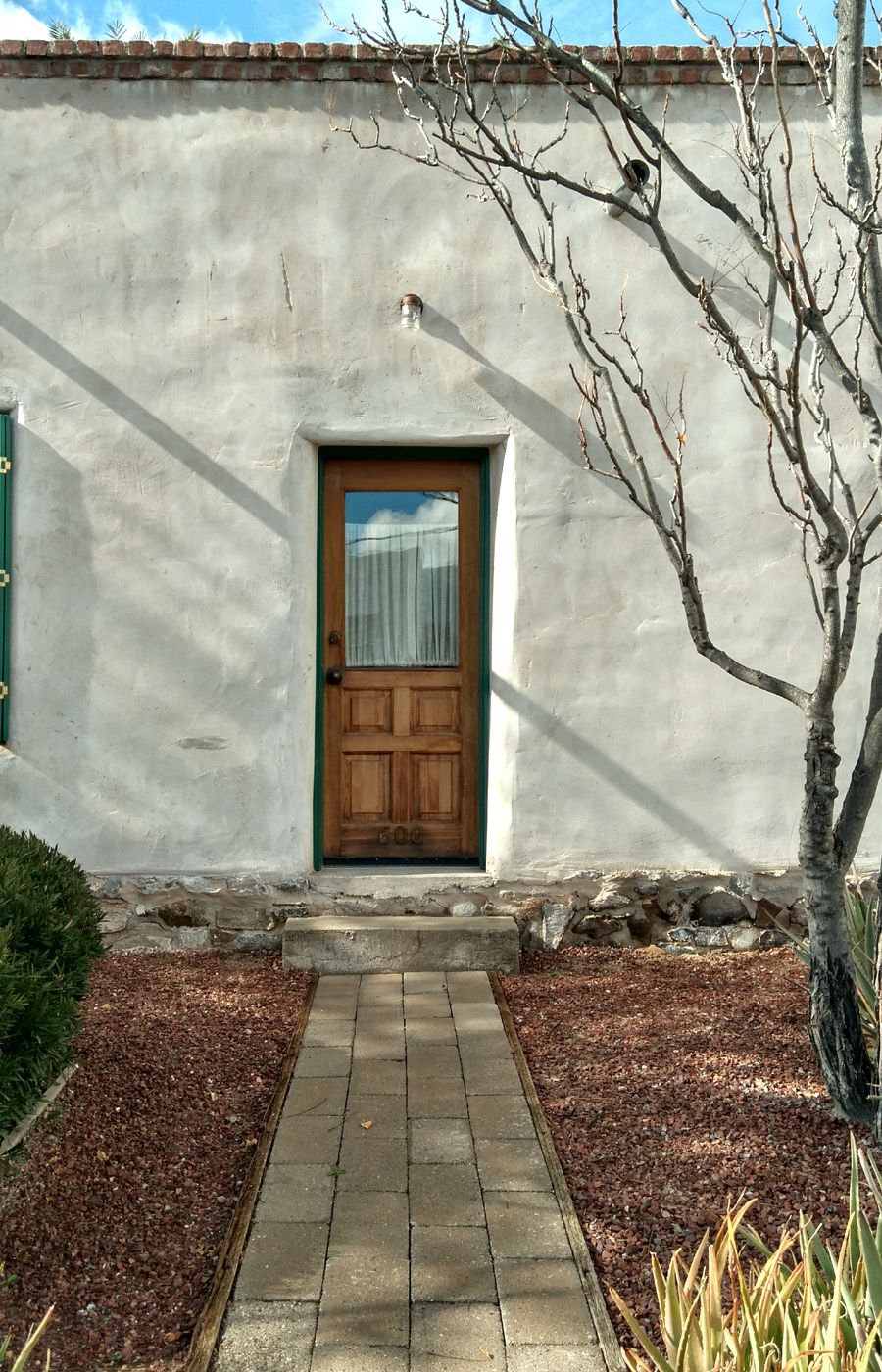
Barrio Viejo (Spanish for old neighbourhood) is known for brightly-colored adobe houses, Mexican cantinas and hip eateries and pubs.
This old neighborhood is packed with 19th century homes. Historically, it was home to some of the city’s most prominent families and notable civic leaders. And in those days, the barrio boasted a colorful street life that reminded some of old Mexico. Up until the 1880s, it was a Free Zone with few policemen.
In the 1880s and 90s it was home to a diverse community of working class people from Europe, Africa, Asia and Mexico, many who worked on the Southern Pacific Railroad. When the tracks were finished, Tucson went from a dusty little town to a city of opportunity.
But many of the homes in Barrio Viejo fell into disrepair in the mid 20th century. The construction of a convention center in 1971 led to the levelling of some 80 acres and razing of homes that displaced 725 residents. Many called it an act of prejudice. The surviving adobe homes make up one of the largest collection of 19th century adobe buildings in the U.S.
Gentrification continued throughout the 1970s. And many of the original Mexican-American residents were pushed out to make way for white middle-class families. The city created a development plan to smooth over disagreements. And residents stopped further damage when they prevented a freeway through their neighborhood.
In 1971, Kelley Rollings lead an effort that turned into a broader movement to save one of Tucson’s most charming districts.
A desert renaissance
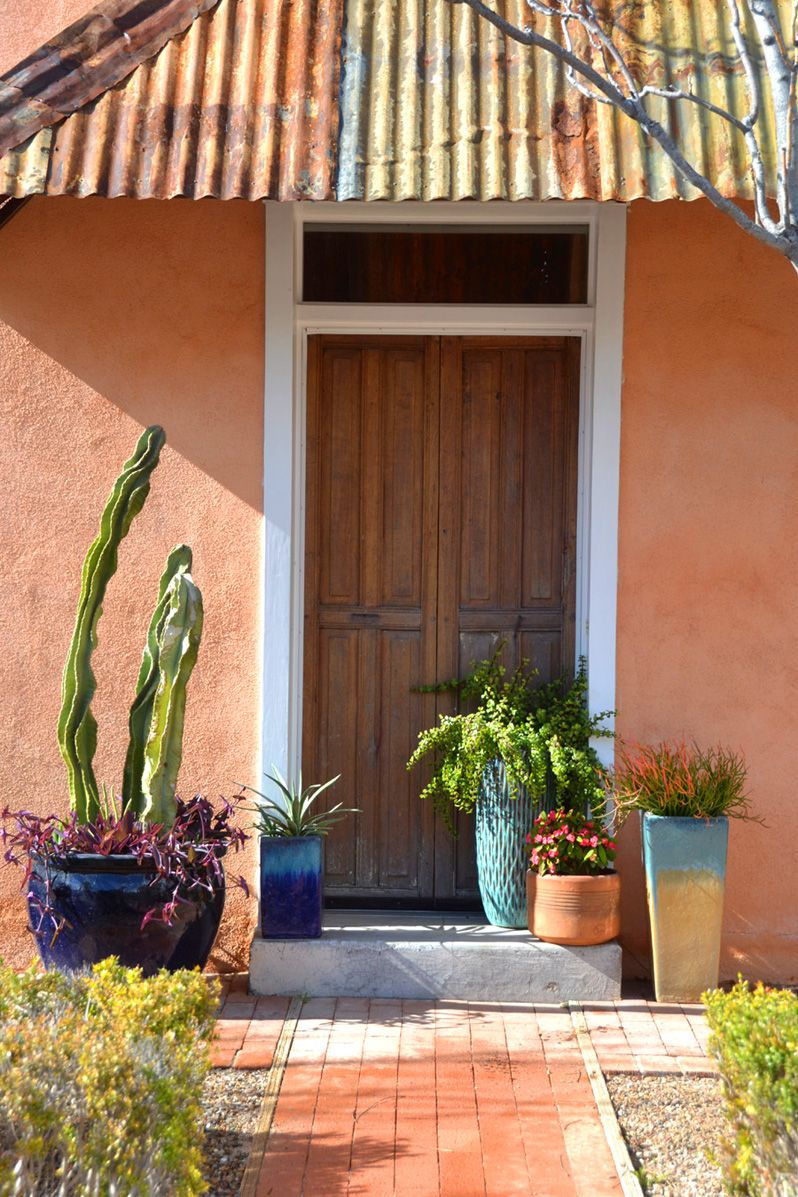
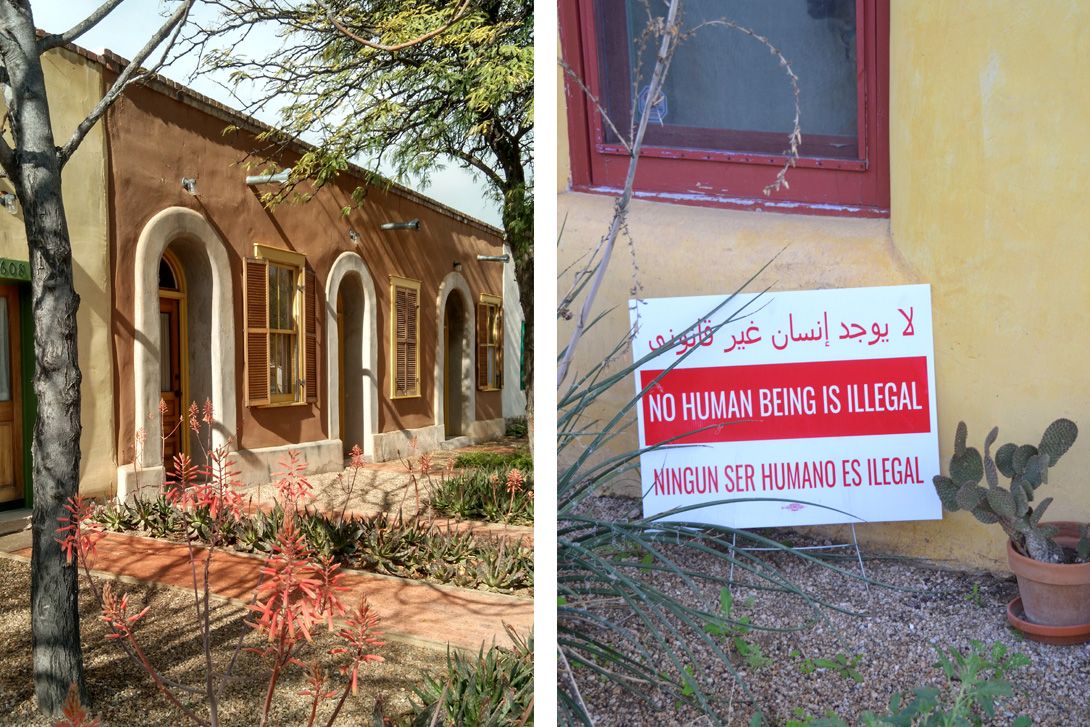
These days, Barrio Viejo is a desirable neighbourhood that’s being revitalized. And it’s again raising the issue of gentrification.
It’s so desirable that Oscar-winning actress Diane Keaton bought a four-bedroom 1880’s-era adobe home here for $1.5 million. She plans on renovating the property and selling it for profit.
The neighborhood, much like Tucson itself, is at the forefront of the immigration controversies that grip the Southwest.
Colorful murals line the quiet streets and bright chili pepper ristras hang in doorways. A few homes have signs (in Arabic, English and Spanish) in their front yards saying all immigrants are welcome.
The diversity of this neighborhood makes for a fascinating walking tour.
If you’re visiting Tucson, here’s my ultimate local’s guide to Barrio Viejo.
1. El Tiradito Wishing Shrine
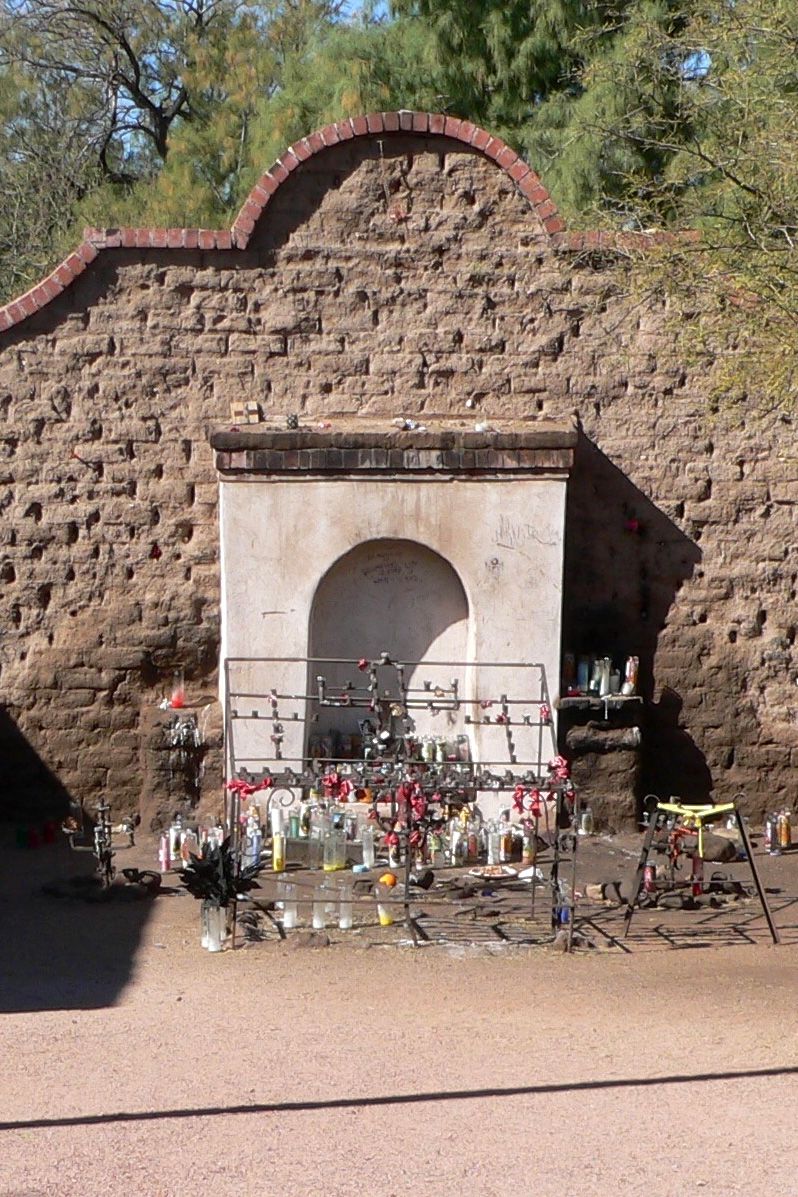
This crumbling shrine is another testament to the neighbourhood’s Hispanic culture.
A rack is filled with candles with colorful images of Catholic saints and papers with prayers fill the cracks of the shrine’s brick walls. Locals say if you leave a candle with a wish and it burns all night, your wish will come true.
It’s often called the only Catholic shrine in the U.S. dedicated to a sinner buried in unconsecrated ground.
The man buried here, Juan Oliveras, was an 18-year-old ranch hand who’d had a steamy love affair with his mother-in-law. His rancher father-in-law eventually caught the two having sex. A fight ensued and the young Oliveras was murdered with an axe. The mother-in-law buried her lover at the spot where he died. And then she hung herself from her balcony in despair.
The enraged father-in-law fled to Mexico and was caught by Apache Indian raiders. He also suffered a violent death. The Apaches scalped him, shot him repeatedly, tied him naked to a tall saguaro cactus and then left him to die along the Nogales-Tucson wagon trail.
In the last chapter of this bloody saga, Oliveras’ young widow hangs herself in a deep well.
Oliveras was denied burial on church-sanctioned ground, despite pleas from the city’s Catholic officials. The shrine stands at the spot where his father-in-law threw his body. And it’s called El Tiradito, or "The Little Throwaway" in Spanish. It’s a historic landmark commemorated with a plaque that calls it an important part of local Mexican lore.
In the 1970s, the city planned to build a road through the site as part of an urban renewal project. But locals got the shrine listed on the National Register of Historic Places and brought construction to a halt.
2. The Jewish History Museum
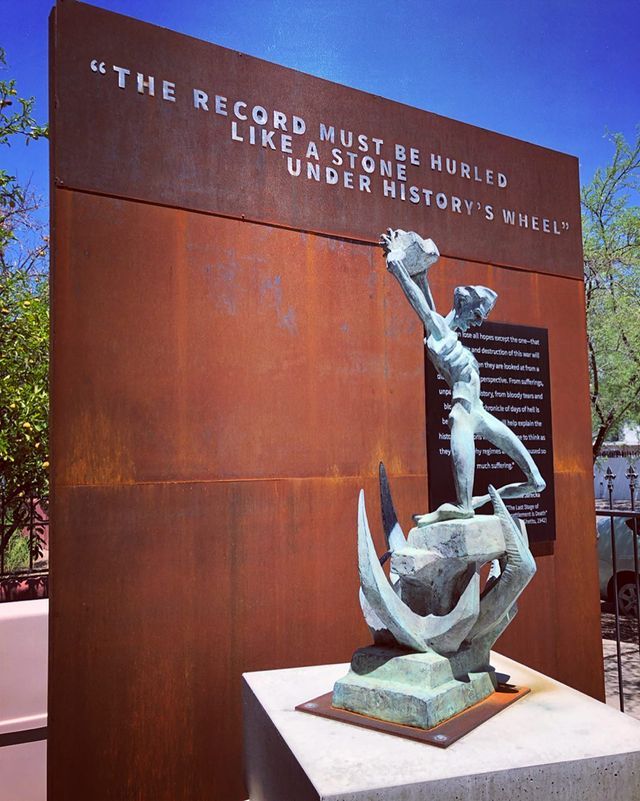

Photos courtesy Jewish History Museum
Opened in 2008, the Jewish History Museum is housed in the first synagogue of the Arizona Territory. It aims to preserve the Jewish heritage of Southern Arizona with a diverse set of exhibits.
The museum collection includes textiles from the 1600s to the present day that show local daily life.
There’s also a collection of photographs by Leo Goldschmidt (1852-1944), a German-born Jew who arrived in Tucson in 1878 and served as a bank director. Goldschmidt was a noted patron of the arts and amateur photographer. His haunting images capture daily life in early Tucson.
The Suspended Lineage exhibit presents photos and bios of those killed in the Holocaust whose family live (or lived) in Southern Arizona.
3. Teatro Carmen


Chris Gillmor, CC BY-SA 3.0, via Wikimedia Commons
Opened in 1915, Teatro Carmen was one of the first theaters dedicated to showing Spanish-language dramatic works and concerts. It’s named for founder Carmen Soto Vasquez.
Today the yellow ochre Sonoran-mission style facade, with its arched windows framed in white, is closed to the public. It stands as another testimonial to the city’s Mexican heritage.
In its heyday it entertained up to 1,400 people. And later it served as a meeting hall, boxing arena, ballroom and cinema.
A plaque calls the theatre a historic site that served as the community’s cultural center.
Its hosted hundreds of performances by famous actors and companies from Spain and Mexico. And the state-of-the-art venue drew in the city’s high-society Latino figures for elegant evenings that showcased the splendors of Mexican culture.
However, by the 1920s movies and boxing matches grew in popularity and dominated the repertoire. Carmen Soto Vasquez booked the dancing and boxing matches until she sold the theater in 1926.
Read A Guide to Mission San Xavier del Bac for more Tucson hidden gems!
Pin it:

You May Also Like
5 Comments

Yolanda Galarza
I now live in the Barrio, and am excited about the changes that are happening here in the neighborhood. I remember the area from my youth. The changes are long overdue, but promising. The Housing for the older folks in the area was a school, Drachman Elementary, some of my aunts and uncles attended the school. Others lived around the corner from the school. Sto


sanchez
I am a decendent of the barrio, although i have never lived there my father, aunts, uncles, cousins and grandparents all resided there. I recentely visited the area of South Meyer street where i still have family living in the homes my Grandparents Parents built in the early 1900’s. Its a shame that gentrification is also present in this community, the abundance of Anglo people in the neighborhood is noticible. A neighborhood that was not desired by anybody other than the sturggling people of hispanic, chinese and african decent who called this home. Today people only see this as an opportunity to make money. Its a shame the natives have been run out of the area for profit.

MARCO FELIX
I have read the previous posts the young Lady feeling happy of the changes in the barrios and the other not so happy about the change that bring à New society of ethnicity to the barrios.
What comes to my mind is an image of dark working hands of our forefathers cultivating these communities that has brought so much pride to the réal barrioistas. Our own culture our own meanings and better yet the fruits of our labor have given us doctors, politicians and splendid members to our community and beyond.
We lost all of this with revitalization .Only our individule pride and love for what we had instilled by our fore fathers
Rey Nichols
Wow, we have been looking for a place to move , we want out of Sedona. Warmer, and we like funky things. This looks like paradise to me. can you keep us on alert. We have cash. Hope it is dog friendly!
Leave a Reply
Your email address will not be published. Required fields are marked *
Name *
Email *
Website
Comment
